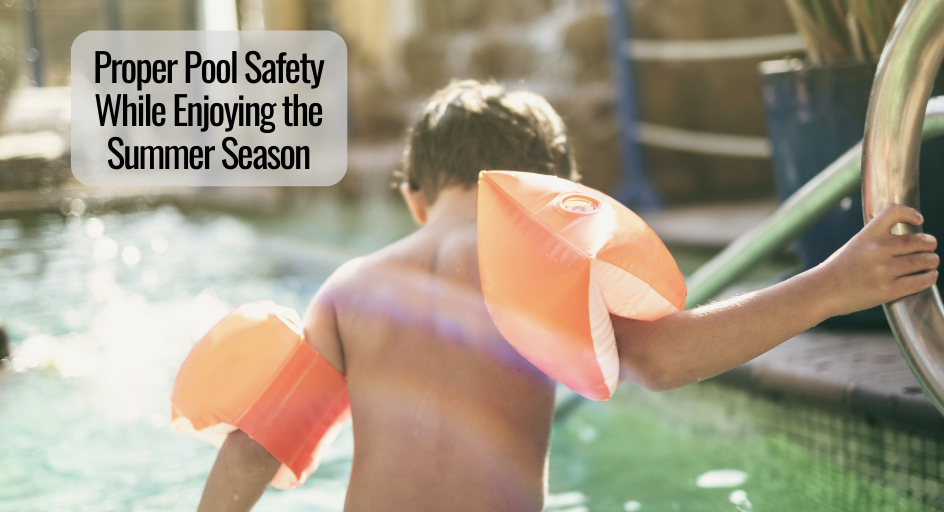
Cooling off in the pool is one of the most fun ways to beat the summer heat. But before you jump in, there are a few safety tips to keep in mind. Many of these suggestions are geared towards your children or young family members, but it is up to you to enforce them and keep everyone safe. Here are six pool safety measures to take that protect both you and your loved ones this summer.
Secure Your Pool
A vital first step in pool safety is building a barrier around the perimeter. A four-sided isolation fence reduces the risk of a child drowning by 83% compared to three-sided property-line fencing. Use fencing that is durable, tall, and self-latching with a latch that is out of reach for young children. For above-ground pools, remove the steps or ladder when an adult is not present.
Designated Water Watcher
When children are swimming, there should always be a designated adult within arm’s reach to assist if needed. If this adult is not in the water, they should be fully prepared to dive in at any time. Watching the water should also be their only task, especially if they are sitting poolside. That means no texting, reading, or playing games on their phone. A cell phone should still be within arm’s reach to call for help, but not kept in a clothing pocket to prevent water damage.
Swimming Lessons
If you plan to bring your infant into the pool, it is not necessary to have completed infant swim lessons (although classes are available). Be sure your baby has on safety-certified flotation attire, and hold them the entire time they are in the water. For older children who are going to swim or play in the pool without an adult holding onto them, it is a good idea to invest time in basic swim lessons. Teaching your children how to paddle with their head above water, float on their back, and safely exit the pool is imperative. As they become more confident, they can remove water wings and floats while learning different swimming techniques.
Drain Awareness
Children who are able to swim on their own should be educated on what to do when they approach the pool drain. If the drain is easily accessible, show your child how the drain uses strong suction to pull water from the pool. Teach children that if they get too close to the drain, their hair, swimsuit, jewelry, or limbs can become pulled down by the suction as well. While the drain is not something to be afraid of, children should not play with the drain or go near it in order to allow the pool to filter water properly.
CPR and Emergency Plan
It is always best to prepare for an emergency that may never happen, rather than to be unprepared if the unexpected occurs. Your family should have a plan for what to do if someone needs help or is drowning. Familiarize yourself with how to perform CPR on both infants, children, and adults. Courses and certifications are often available in your community. Recruit teens or older children to call 911, and make sure younger children know to clear the pool and wait for instructions. Practice your plan so each person knows their responsibility.
Pool Insurance
Your general homeowners insurance may offer some liability coverage, should a guest injure themselves while in your pool. Pool owners are also liable for injuries, whether the guest has permission to use the pool or not. Additionally, most homeowners policies only cover a certain percentage of the cost of non-residential structures on the property. If your pool becomes damaged by a guest or natural accident such as a tree falling on it, you would only receive a percentage of the cost to replace it. Keep your family and guests safe by maintaining the proper liability and damage coverage. Your local insurance agent can help determine what coverage is right for you.
When you set the proper ground rules for pool safety, everyone is able to enjoy a fun and worry-free experience. Use these tips and maintain the appropriate insurance coverage so you can feel secure and safe this summer.